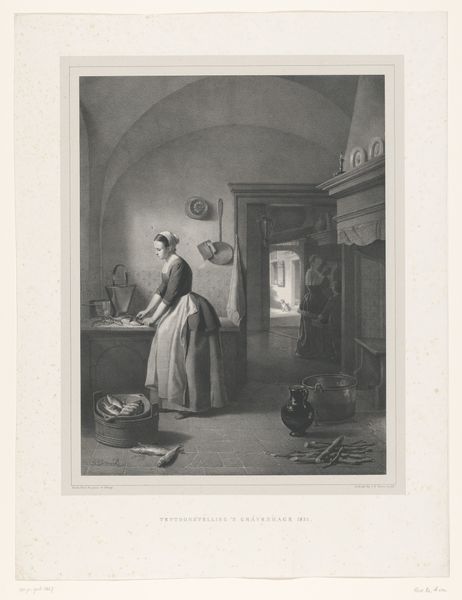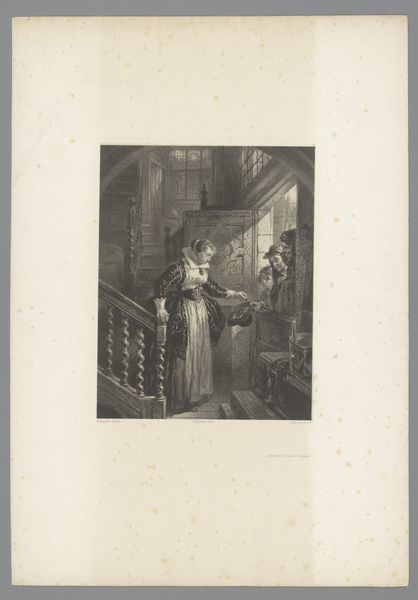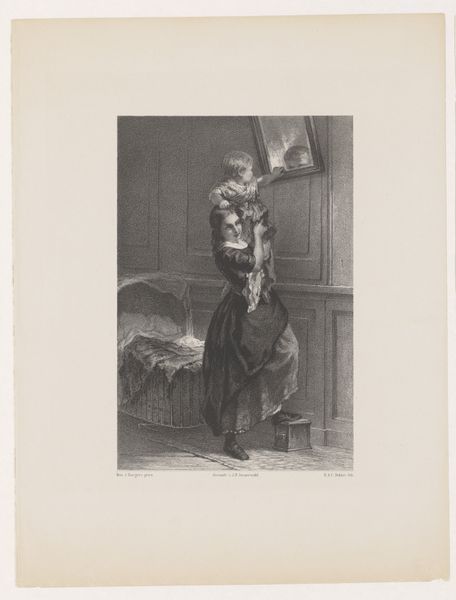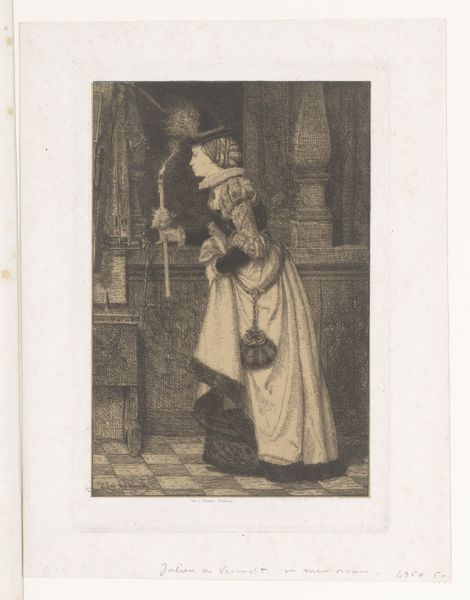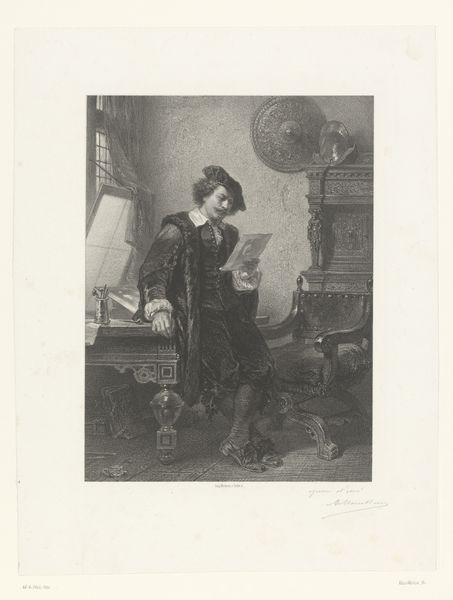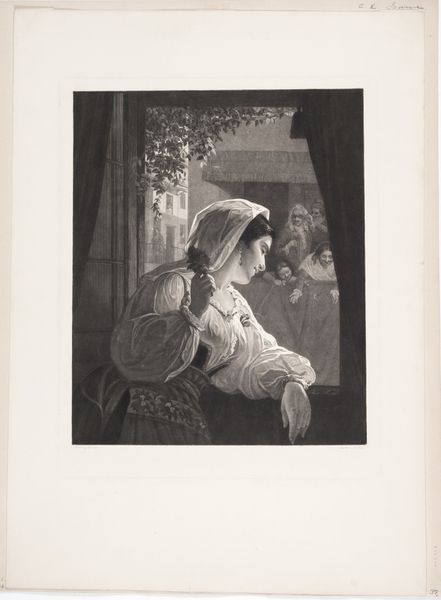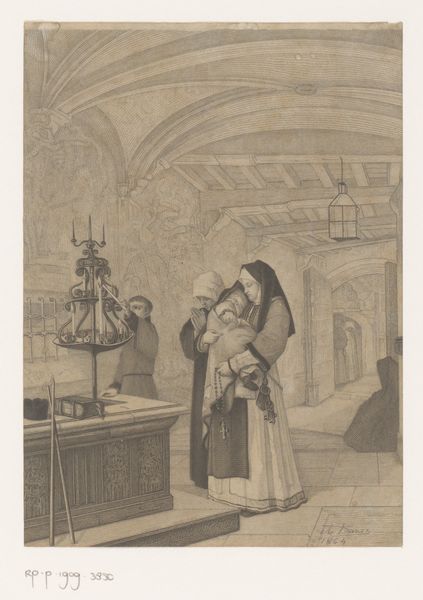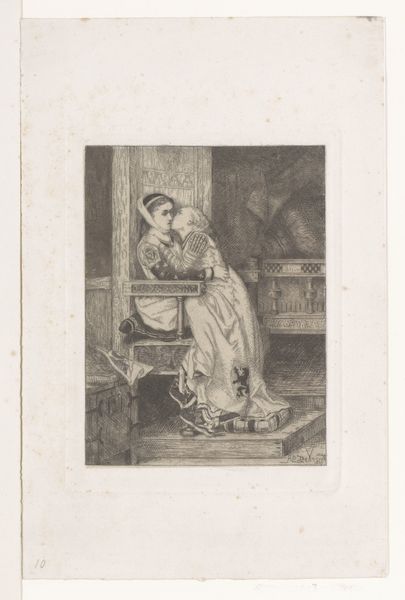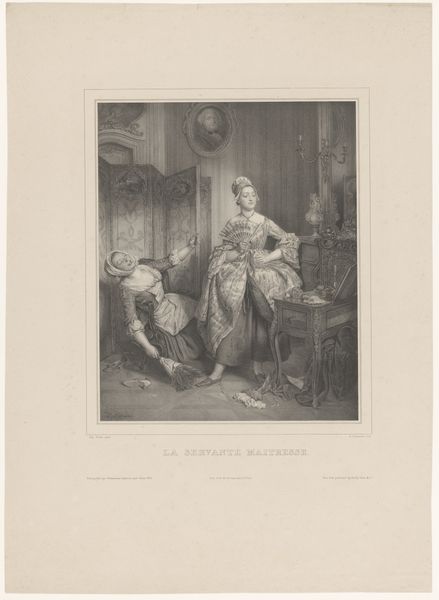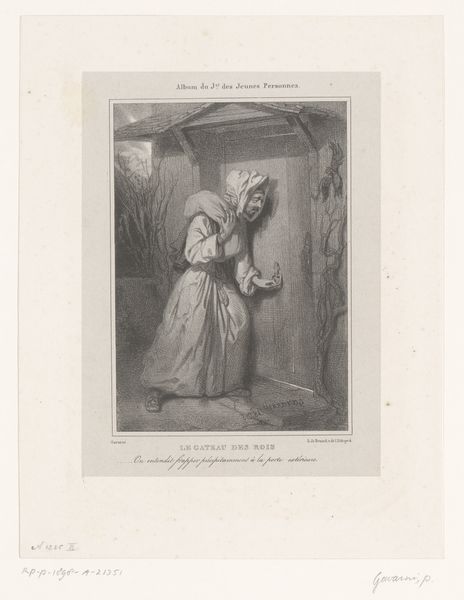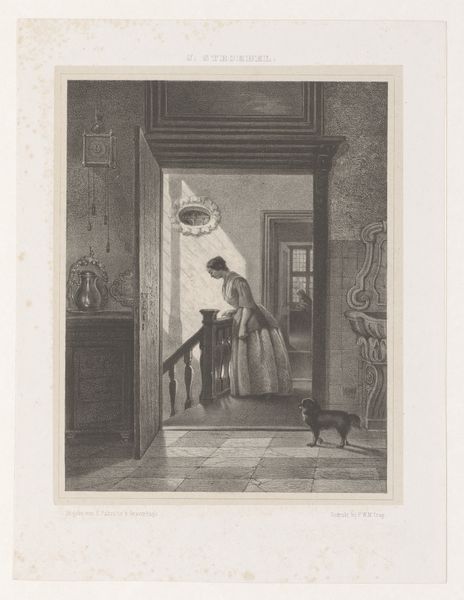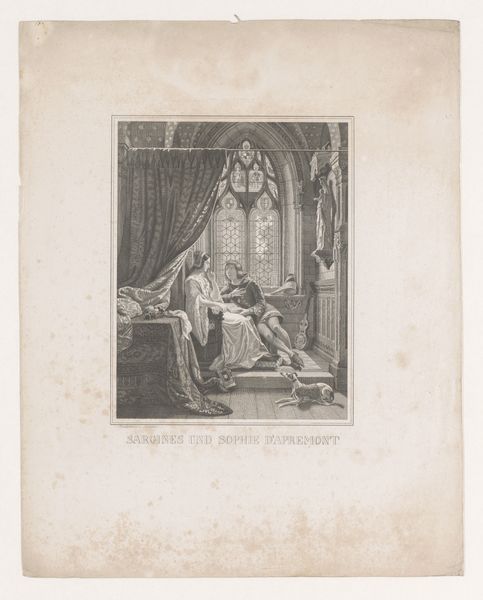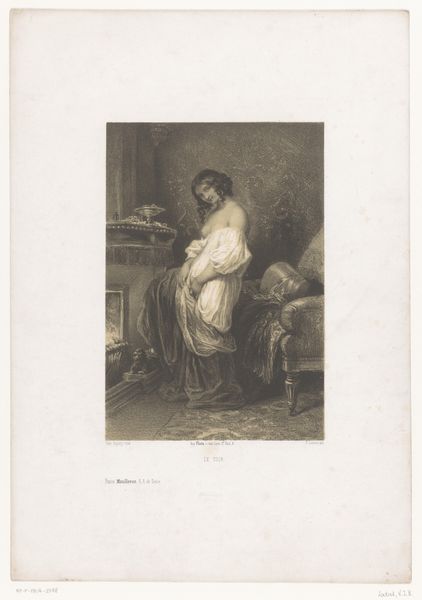
print, engraving
#
narrative-art
# print
#
figuration
#
romanticism
#
genre-painting
#
engraving
Dimensions: height 660 mm, width 512 mm
Copyright: Rijks Museum: Open Domain
Curator: "Interieur met vrouw met ring in haar hand" – Interior with a Woman Holding a Ring – created sometime between 1818 and 1837 by Johann Sprick. It's an engraving. Editor: It’s very…theatrical. Look at the stark contrast in light and shadow, it throws the figure of the woman into sharp relief, and there's a real stillness about her, almost as though she is pausing, holding her breath. Curator: Absolutely. In the context of its time, prints like this were powerful disseminators of social and political ideas, shaping public perceptions about gender and class. Romanticism was in full swing. Note her dress: this image is undoubtedly participating in, but also interpreting and mediating, a specific political narrative around bourgeois identity and social expectations for women. Editor: You’re right, she's in this sort of ornate domestic space, yet her posture speaks volumes about her engagement – or perhaps, disengagement – with it. Look at how she regards that ring. Is it a symbol of potential liberation or another link in the chain that ties her to this setting? Her ambivalent gesture really captures that sense of a woman in negotiation with societal pressures. Curator: And we cannot ignore the economic conditions underpinning artistic production at this time. Sprick and other artists would cater to a burgeoning market hungry for accessible imagery – images shaping and being shaped by socio-economic shifts. So how does that impact the role and reception of these types of images in solidifying national identity? Editor: A market always loves drama, a good story. The intimate nature of genre painting allows a broader, even populist appeal. This image would circulate and be reproduced…it's not just a single artistic expression but participates in mass image production. I think these interior scenes offered people a window into understanding, maybe even solidifying, the idea of "home" itself. Curator: Exactly! Thinking through feminist art histories allows us to decode that the image isn't just about a woman; it’s about the institutions shaping her choices. The artist captures an instance within domestic confines where gendered scripts are both played out and challenged, prompting us to analyze these interactions more critically. Editor: Thinking of the market it entered, its original display, helps me understand how deeply domestic space – so intensely rendered here by the artist – was already understood as a battleground of ideas and representation. The quiet of it all gives you space to reflect.
Comments
No comments
Be the first to comment and join the conversation on the ultimate creative platform.
